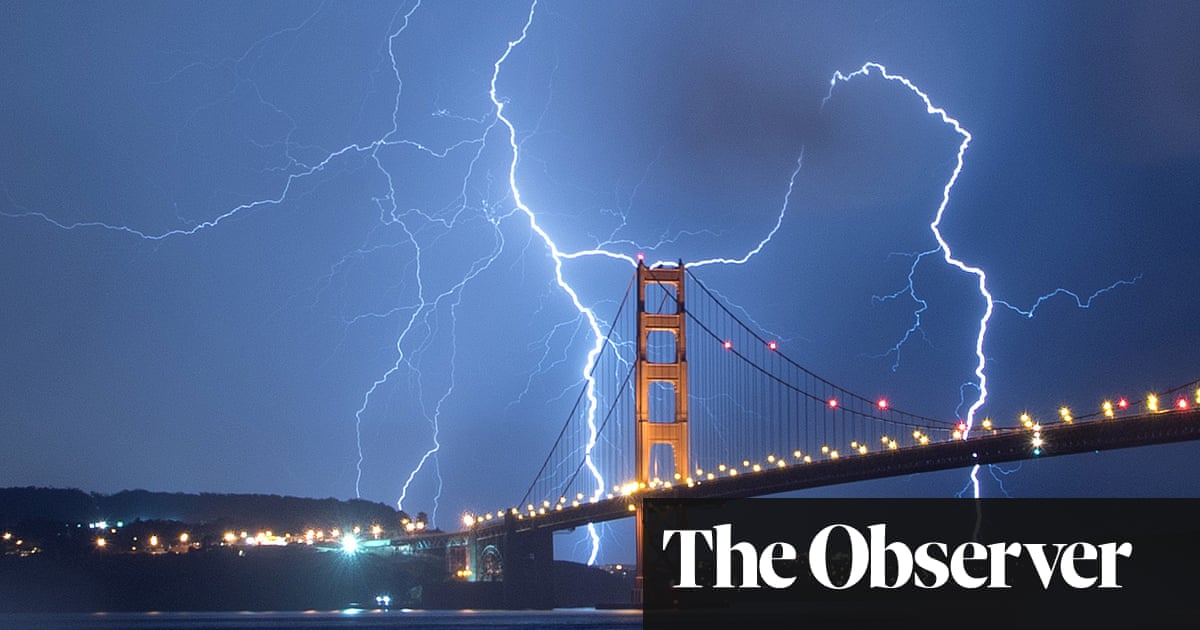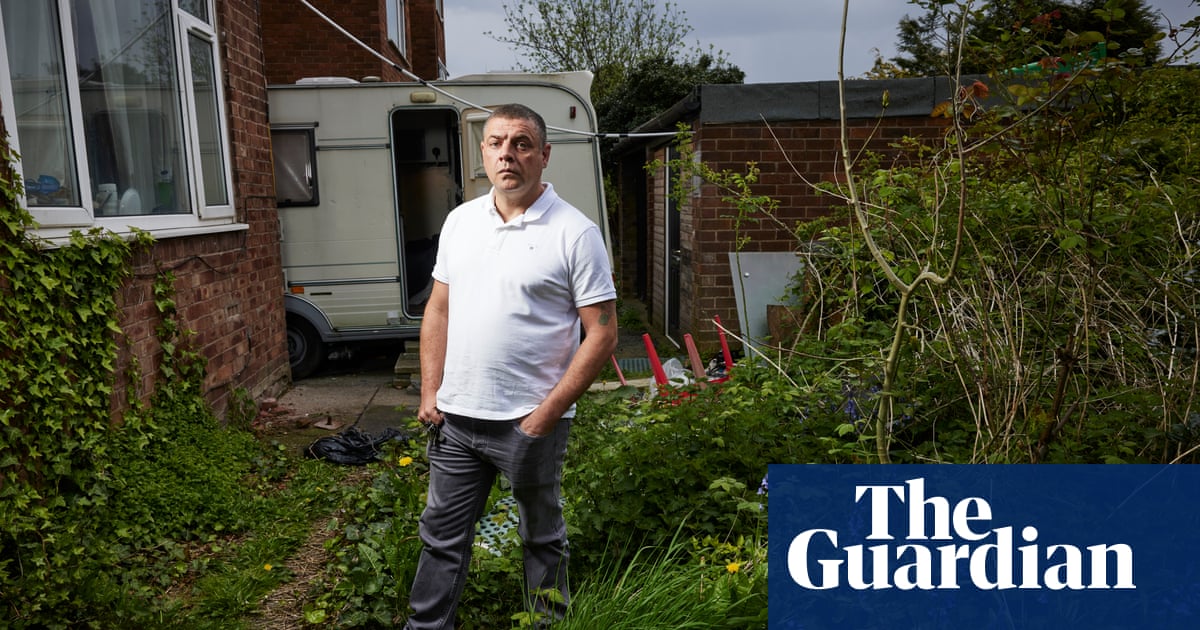
You know that feeling when you accidentally buy the wrong house? No, me neither. Cal Hunter does, though, and it was to prove quite the most fortuitous error of the 31-year-old carpenter’s life.
The blunder, in 2018 – attributed to a fast-talking auctioneer and a mix-up with lot numbers – left him and his partner Claire Segeren, 29, with a derelict Victorian villa 35 miles from the apartment in Glasgow that they had been targeting.
They had wanted a project; they got a property described as “on the point of collapse”, a state presumably shared by their families when they saw the couple’s purchase.
Not to be disheartened, and because Scottish auction bids are legally binding, the pair embarked on a restoration so daunting and improbable it lasted four-and-a-half years, garnered global media attention, spawned a warts-and-all documentary, and saw them accrue more than 300,000 Instagram followers.
Sitting in the open-plan living room/kitchen of one of the two holiday lets they fashioned from the ground floor of the villa, named Jameswood, the couple give off a faint air of incredulity. The paint’s barely dry. We’re their first visitors. I don’t think they can quite believe what they’ve achieved.
My young children are equally dumbstruck; it’s a rare holiday indeed on which you watch your hosts in a four-part BBC series on the journey there, then find them waiting for you on the doorstep. “Look – it’s the sweary one!” announced my youngest, yet to be initiated into the boundless frustrations of DIY.
The sweary one, for his part, is looking relaxed after a morning shifting soil in the garden, which extends 24 metres to the rear and will soon boast a pizza oven around which guests and their hosts can mingle. “Despite everything, I knew quite quickly that this was the house for us,” he says.
Our two-bedroom flat is served by what was formerly the main entrance; it has a boot room, a bay window with views down to the water and french windows leading to the garden. The neighbouring flat, of similar scale, is accessed via a side door, and the home Cal and Claire have created upstairs for themselves has its own steps and entrance at the back.
All three are spacious and high-ceilinged, and mix Victorian solidity with contemporary decor. The fire-engine red of our living room door has us pestering Claire for the paint manufacturer. And where once the legs of a chair in the room above descended from the ceiling, now hangs a retractable projector screen for watching films. The flats are immaculate but also (parents give thanks) hardy. “Dogs, mud, sand, it’s all good!” says Claire.
The really fortuitous part of the botched house purchase was the setting: the 120-year-old red-sandstone property is on the edge of Dunoon, a shore-front town on the southern fringes of the Highlands to which holidaying Glaswegians once surged in the age of the Clyde steamers.
It may not have quite the Côte d’Azur vibrancy that train company LNER’s vintage posters would have you believe, but there’s an unmistakable charm to this peninsular town. Crossing the Firth of Clyde by ferry, to save a circuitous loop by land, lends the place a gratifying island feel. City stresses stay on one side of the water; there are just lochs, mountains, burns and glens on the other.
Claire and Cal have compiled a guidebook showcasing their favourite finds from years of sanity-saving outings. On day one, we try the half-hour drive along a winding forest road to the Kyles of Bute – a wishbone of turbulent water that separates the talons of the Cowal peninsula from the rodent-like morsel of Bute.
From there, a couple of miles south-west, is one of Cal and Claire’s best tips: the wild beach of Kilbride Bay, where betrothed couples, oddly oblivious to the name, have been known to get married. We park by the nearby farm and follow the track for 15 minutes down to the windswept, sunlit dunes for a happy hour leaping around in the waves. The Isle of Arran, like a distant citadel, broods in silhouette across the water.
Other recommendations lie closer to Jameswood. Puck’s Glen, a five-minute drive away, is a network of Victorian walkways zigzagging up through a moss-wrapped ravine of waterfalls and steepling Douglas firs. The glen is near the southern tip of Loch Eck. Seven miles long, a swimmable width and with the road fastidiously tracing its eastern flank, it’s the perfect entry-level loch for families.
Early morning proves optimal for dips, when the surface is like a polished slate hearth and a soft orange haze hangs over the water. One morning we borrow Jameswood’s two inflatable kayaks, launch from a sandy beach midway up the loch and paddle out to eat breakfast afloat. Claire is delighted. “That’s exactly the sort of thing we hoped guests would do!” she messages.
Emma Thompson has a property in the neighbouring valley, Glen Massan. I shamelessly float the prospect of seeing a cinematic grande dame in the wild as a carrot for getting the kids to join me on a hike up adjacent Beinn Mhòr.
We follow the valley road to its end and set off on foot to the trailhead. The hike takes several hours, yet my girls are so busy scouring the densely packed conifers and open grassland for a sighting of Miss Trunchbull/Professor Trelawny that they barely spot that we’ve ascended to the 741-metre summit of the Cowal’s highest peak. Immense views open up in every direction: a muscular, camo-kitted swathe of green and darker pockets of forest, giving way to the distant glint of the Firth of Clyde eight miles south and – if we really squint – Dunoon itself.
The town, we decide during the course of our stay, sits somewhere between heyday and full-throated comeback. There’s a palpable sense of community pride and dynamism, exemplified by the rescuing from demolition of Dunoon Burgh Hall, a listed building dating from 1873, which was reopened in 2017 as a gallery, theatre and cafe. Little wonder, then, that Cal and Claire have garnered plenty of local support; everyone wishes them well.
It’s hard to see how they can fail. They have the location. They have, thanks to their herculean efforts, a pair of outstanding holiday lets. Most importantly, they have the ready-made clientele: those 300,000 followers, who they’re eager to hang out with and thank, says Claire. “Their support has been amazing.”
It’s a mutual affection. On the way home, I look at the What Have We Dunoon Instagram account. This comment, from “yankygrits”, is typical of the vibe. “If I hadn’t been following y’all since the beginning, I wouldn’t be able to wrap my head around all that you’ve done. I feel so proud … even though we’ve never met.”
Well, now’s the chance.












